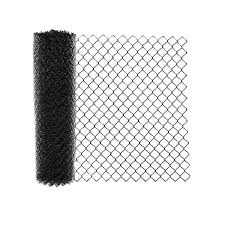The Versatility of Gabion Wall Structures in Riverbank Protection
In the realm of civil engineering and environmental management, gabion walls have gained recognition as a sustainable and effective solution for riverbank protection. These structures, constructed from wire mesh filled with stones or rocks, provide not only structural integrity but also aesthetic value to surrounding landscapes. The use of river rocks in gabion walls uniquely aligns with the natural environment, creating a harmonious blend that benefits both nature and human infrastructure.
Understanding Gabion Structures
A gabion wall is typically composed of three-dimensional cages filled with rocks, often referred to as gabions. These cages can be made from galvanized or PVC-coated wire mesh, which enhances their durability against weathering and erosion. The rocks used can vary, but river rocks are preferred due to their smooth surface and appealing appearance. The flexibility in design allows engineers to create walls that can hold back soil, manage water flow, and prevent erosion along riverbanks.
Benefits of Gabion Walls
1. Erosion Control One of the primary purposes of gabion walls is to prevent soil erosion along riverbanks. The weight of the stones helps stabilize the soil, reducing the impact of water currents. This makes gabion structures particularly effective in areas prone to flooding or where water runoff is a concern.
2. Natural Drainage Unlike solid concrete walls, gabion walls offer natural drainage. Water can easily flow through the gaps in the stones, reducing hydrostatic pressure and allowing for better water management. This characteristic is crucial in preventing water accumulation that could compromise the stability of the wall.
3. Environmental Sustainability Gabion walls often utilize local materials, minimizing transportation costs and environmental impact. The use of river rocks, readily available in many locations, not only supports local geology but also promotes biodiversity by incorporating natural elements into the landscape. Furthermore, these structures can serve as habitats for various wildlife, contributing to ecological balance.
4. Cost-Effectiveness In terms of construction and maintenance cost, gabion walls provide an economical solution. The materials needed are typically low-cost, and installation can be done without extensive machinery, making them accessible for various projects, especially in remote areas.
gabion wall river rock

5. Aesthetic Appeal Gabion walls offer a rustic charm that can enhance the natural beauty of landscapes. By choosing river rocks in different shapes, sizes, and colors, designers can create visually appealing structures that blend seamlessly with their surroundings. This aesthetic value is particularly desirable in parks, gardens, and residential areas near water bodies.
Construction Considerations
When planning and constructing gabion walls, several factors should be taken into account to ensure their effectiveness
- Site Assessment Understanding the specific environmental conditions of the riverbank, including soil characteristics and water flow patterns, is vital. This assessment will guide the design and material selection for the gabion wall.
- Sizing and Spacing The dimensions of the gabion cages and the spacing between them should be calculated based on expected water flow and potential erosion forces. Proper engineering ensures that the wall can withstand environmental stresses over time.
- Quality of Materials While river rocks are often the preferred choice due to their availability and aesthetics, using high-quality materials for the mesh and stones is essential for the longevity and durability of the wall.
Conclusion
Gabion walls filled with river rocks present a versatile and eco-friendly solution for managing riverbank erosion and protecting the environment. Their unique combination of functionality and beauty makes them an increasingly popular choice in landscape architecture and civil engineering. By utilizing sustainable practices and local resources, gabion structures not only address immediate engineering challenges but also promote a balanced coexistence with nature. As communities continue to seek effective river management solutions, gabion walls will undoubtedly play a pivotal role in shaping resilient and aesthetically pleasing landscapes for the future.
















